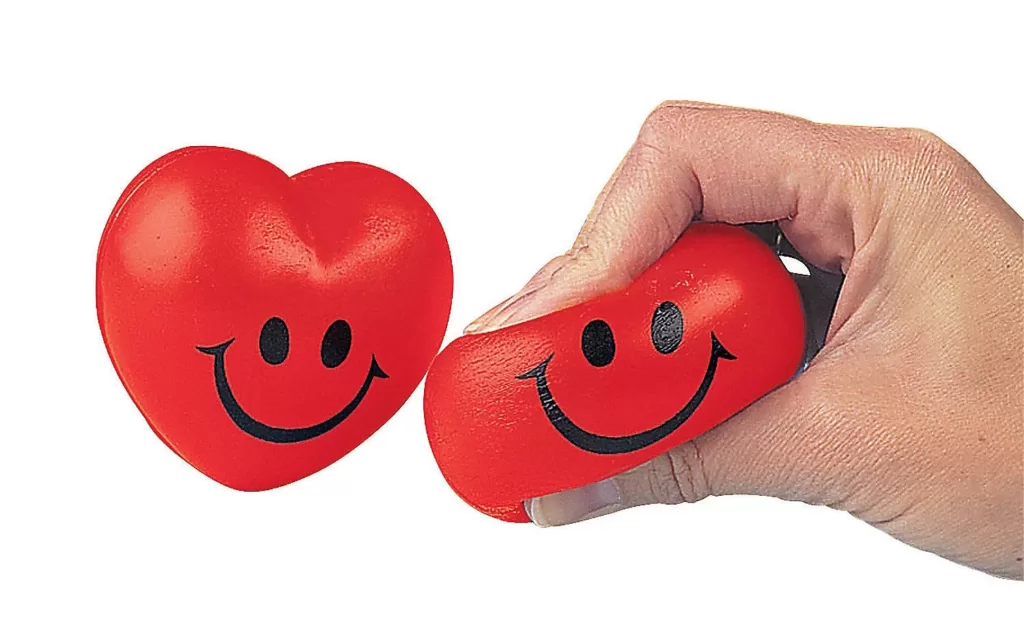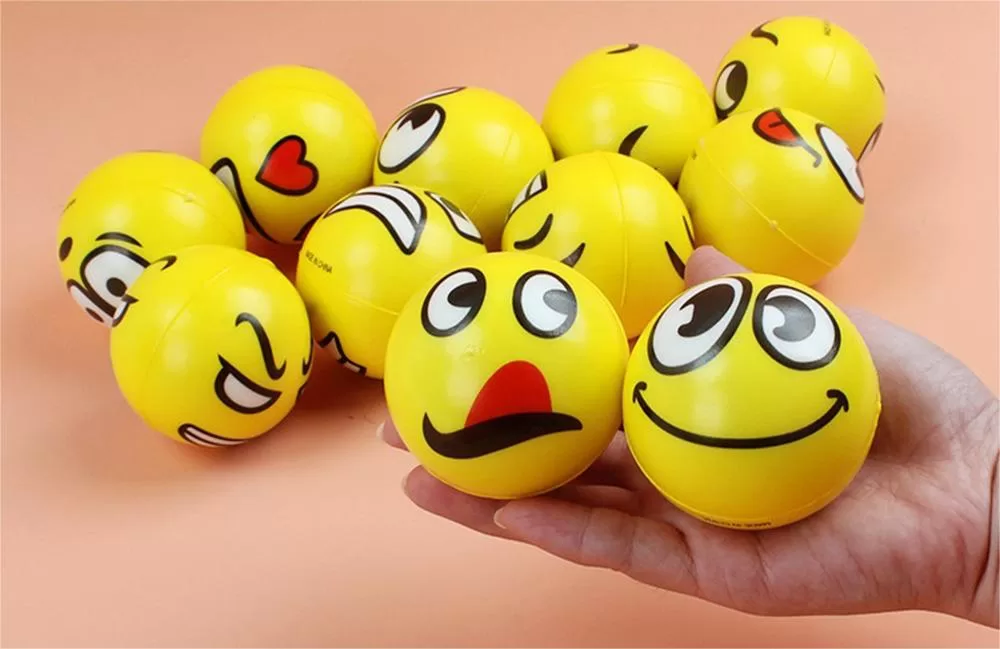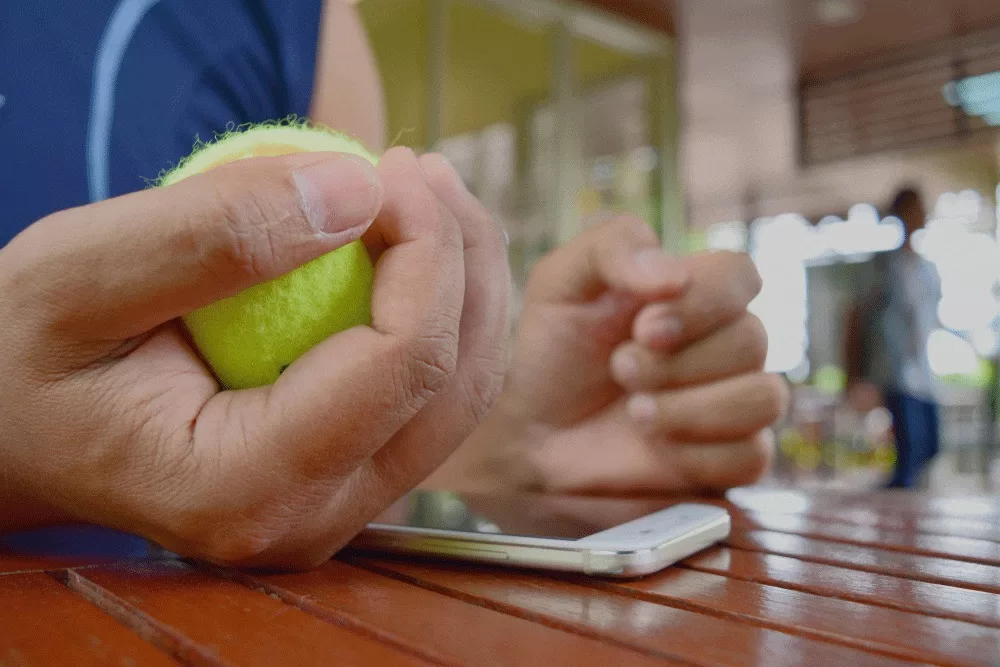In modern life, people pay more and more attention to physical health and sports training, and hand strength training has gradually become a kind of attention to fitness way. Polyurethane grip balls, as a new type of hand strength training tool, are favored for their excellent physical properties and use. In this article, we will explore the polyurethane grip ball and introduce the characteristics and usage of this new hand-strength training tool.

What is a Polyurethane Grip Ball?
The Polyurethane grip ball is a grip ball made of polyurethane material, which is softer, more flexible, durable, less likely to slide, and causes less skin irritation than traditional plastic or metal materials. These grip balls can be used for hand rehabilitation and are suitable for people of all ages and have the function of training arm, finger, and wrist strength, strengthening hand muscles and joints, as well as helping to improve hand sensitivity and coordination. Polyurethane grip balls are available in different weights and sizes, so you can choose to use them according to your personal needs.
Types of Grip Balls and Different Levels
The following are some of the different material types of grip balls, and their specific levels and difficulties:
- Polyurethane Grip Ball: This material is the most popular and common grip ball. It is very soft and flexible and fits the hand very tightly. The common level is 100-350 lbs, and the difficulty is roughly divided into beginner, intermediate, and advanced.
- Rubber Grip Ball: It is harder than polyurethane, easier to slide, and more difficult to grip. Therefore, it has a higher level of difficulty, usually 350-500 lbs., and is roughly divided into intermediate and advanced, suitable for trainers with strong hand strength.
- Metal Grip Ball: The weight is relatively large, and used to exercise the strength of the arms, wrists, and fingers. Common materials are steel or aluminum. The level is about 100-350 lbs, and the difficulty is divided into beginner and intermediate.
- Plastic Grip Ball: Lighter, suitable for beginners. The level is about 20-100 lbs, the difficulty is divided into beginner.
Lbs is a unit of measurement of weight or strength, equivalent to pounds in the imperial system. In the fitness field, lbs is often used to indicate the weight or level of weight or strength training equipment, such as grip balls, dumbbells, barbells and so on. Common weight levels are 20, 50, 100, 200, 300, 400, 500 lbs, and so on.
The Advantages and Functions of Polyurethane Grip Ball
The polyurethane grip ball is a tool specifically designed to train hand strength and strengthen wrist and forearm muscles. It can improve the grip, agility, and duration of the hand, as well as prevent hand injuries and improve the strength of the fingers.
Advantages of Polyurethane Grip Balls
- The polyurethane material has high elasticity and durability is not easy to deform and is aging, and durable.
- A soft hand feel, comfortable grip, and good hand feel can relieve hand fatigue and tension.
- Compact size and lightweight can be practiced anywhere and anytime, very convenient to carry and use.
Functions of Polyurethane Grip Balls
- Enhance grip strength: Shaped to fit the hand grip, holding the grip ball for training can greatly enhance the grip strength of the hand.
- Enhancement of finger strength: Each small muscle in the hand can be targeted for exercise individually, thus enhancing finger strength and duration.
- Forearm muscle exercise: Training, the process of holding the grip ball requires the use of forearm muscles to support, so as to get forearm muscle exercise.
- Prevention of hand injuries: Hand muscle exercises can prevent hand injuries, especially for professionals who need to do heavy physical labor is very beneficial.
- Improve hand agility: Training can improve hand agility, making the hand more flexible and precise.
- Stress Release: By constantly squeezing and kneading, you can vent your emotions to release stress.
How to Properly Use?
The following methods and techniques are available for using polyurethane grip balls.
- Choose the right grip ball for you. Beginners can choose a smaller diameter, lighter mass ball for training, and gradually move to a larger and heavier ball.
- Hold the grip ball and clench the ball firmly so that it fits snugly in the center of your palm. Squeeze hard for about 5 seconds, then slowly relax for about 5 seconds.
- Repeat step 2 for as many sets as you are able and feel comfortable with. Generally, train 3-5 sets per day, with 8-12 repetitions per set.
- You can gradually increase the duration and difficulty of the training, such as holding the ball with the backhand while also turning it sideways, and so on.
- Maintain good posture when using the polyurethane grip ball to avoid twisting the wrist or causing pain.
- Grip ball training is only one way of hand strength training, In order to be more comprehensive and effective training, should also be combined with other training methods, such as dumbbells, barbells, and so on.
- Grip balls are often contaminated with hand sweat and grease, so they should be cleaned regularly to maintain hygiene and cleanliness.
Precautions When Training
In order to train more efficiently and safely with polyurethane grip balls, you must be aware of the following:
- Start by choosing a grip ball with an initial weight that suits you, and then you can gradually increase the weight.
- The polyurethane grip ball should fit snugly into the palm of your hand to avoid gaps.
- When using the grip ball, you should relax your arm and shoulder muscles and avoid using other muscles instead of hand muscles to complete the exercise.
- When holding the grip ball, attention should be paid to the uniformity of the grip to avoid excessive curvature or external sliding of the fingers, which can lead to wrist and elbow injuries.
- Gradually adapt to the exercise and gradually increase the difficulty of the exercise to avoid muscle soreness and injury caused by too much practice in a short period of time.
- Drink enough water to keep your body hydrated to avoid dehydration.

What Categories of People for?
A grip ball is an exercise tool for hand muscle strength and endurance training for the following people:
- Athletes: Grip ball has an important role in the strength, endurance, and coordination training of athletes, like weightlifting, triathlon, boxing, and other sports that require hand strength and endurance can be improved by grip ball hand muscle strength and endurance.
- Office people: People who use computers and cell phones for a long time often have hand muscle tension, often have hand numbness, hand pain, and other problems, the use of a grip ball can relieve hand muscle tension, and increase hand muscle strength and stamina.
- Musical instrument players: Some musical instruments such as guitar, piano, accordion, and so on. need hand muscle strength and sensitivity, the use of a grip ball can improve hand muscle strength and sensitivity, to achieve better playing results.
- Rehabilitation patients: Hand muscles do not get enough exercise, easy to produce hand muscle atrophy and other problems, grip strength ball can help rehabilitation patients to restore hand muscle strength and endurance through gradual adaptation of strength exercises.
Time and Frequency of Training
The time and frequency of training with a polyurethane grip ball vary from person to person, but it is generally recommended to hold the ball for about 15 minutes per training session and to train 2-3 times per week, with no more than two days between sessions. Beginners should start practicing with a lower bouncing ball and gradually increase the bounce to avoid pain and soreness in the hands. At the same time, attention should be paid to the correct way of holding the ball to avoid hand injuries caused by holding the ball for too long or gripping it too tightly.
Combine with Other Exercises and Practice Methods
- Barbell and dumbbell training: When using barbells or dumbbells for strength training, the addition of polyurethane grip balls can increase arm and hand strength and stability.
- Suspension training: Using a polyurethane grip ball during suspension training can enhance grip strength and work the muscles of the arms and mid-back.
- Finger extension exercises: Place a polyurethane grip ball in your hand, grip it gently, then spread your fingers as far as possible and repeat ten times.
- Palm inversion exercise: Place the polyurethane grip ball in the palm of your hand, straighten your arm, and turn the ball inward, repeat ten times.
- Wrist twisting exercise: Hold the polyurethane grip ball in your hand, straighten your arm, twist your wrist upward, and then twist it downward, and repeat ten times.
Common Mistakes in Training
Mistakes
- Overuse: Overuse may lead to hand muscle strain, soreness, and injury. Training intensity and time should be gradually increased.
- Incorrect grip: Incorrect grip may cause pain and injury to the wrists, arms, and shoulders. The correct grip is to hold the ball in one hand and hold it firmly up and down.
- Using the wrong weight: Too heavy or too light a grip on the ball may be detrimental to strength training and the proper weight should be chosen.
- Wrong training frequency: Training too frequently may lead to overuse and muscle strain, and the training time and frequency should be reasonably arranged.
Cautions
- Gradually increase the volume and intensity of your training, do not use more intensity than you can handle at the beginning.
- Choose the correct grip to avoid arm, wrist, and shoulder injuries.
- Choose the appropriate weight of the grip ball to avoid poor training results or muscle strain.
- arrange the training time and frequency reasonably, once or twice a week can be training.
In conclusion, the polyurethane grip ball is a great training tool, but it must be used with proper posture and frequency to avoid injury. If there is any pain or discomfort, you should stop training immediately and consult your doctor or trainer for advice.
Maintenance
Proper maintenance and care can extend the life of polyurethane grip balls, Here are a few suggestions:
- Clean regularly: Use a damp cloth or paper towel to clean the surface of the ball to avoid sweat and dirt accumulation.
- Keep dry: Grip balls should be stored in a dry place to prevent moisture and mold growth.
- Store properly: Grip balls should be stored at room temperature or low temperature, avoid storing them in a hot environment for too long.
- Avoid exposure to sunlight: Prolonged exposure to sunlight will cause yellowing and deformation of polyurethane balls.
In short, proper care and maintenance of a polyurethane grip ball can extend its life, while also ensuring the safety and effectiveness of training.

Conclusion
These grip balls, made of polyurethane material, stand out for their softness, flexibility, and durability. They are especially beneficial for enhancing grip strength, finger strength, and forearm muscle strength. At the same time, by constantly squeezing the balls, you can release your bad feelings as well as relieve stress. It is an ideal tool for hand exercise and stress relief in one.

